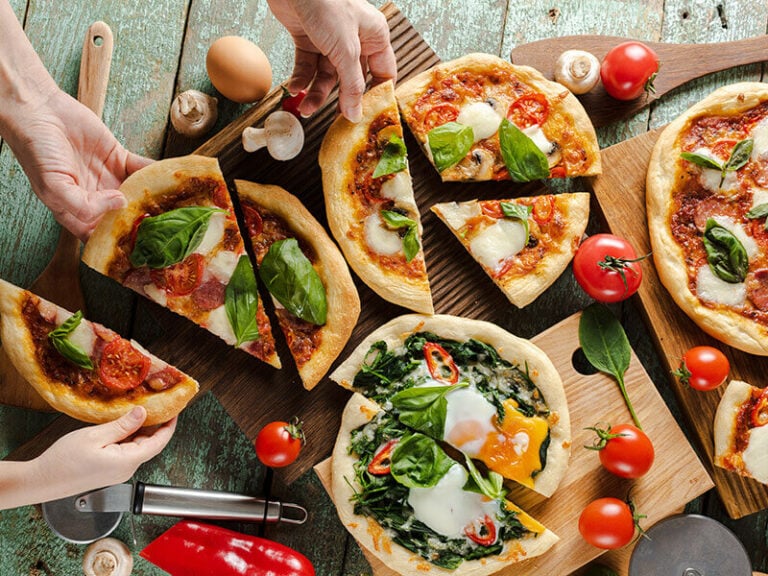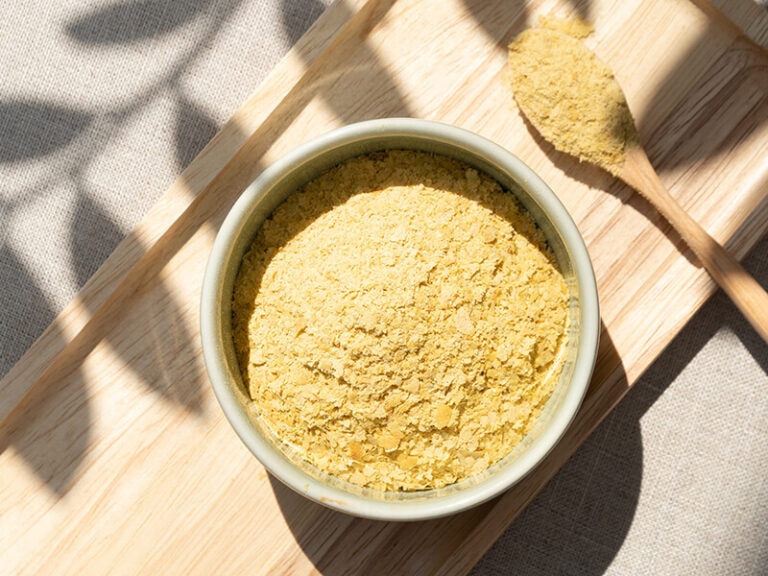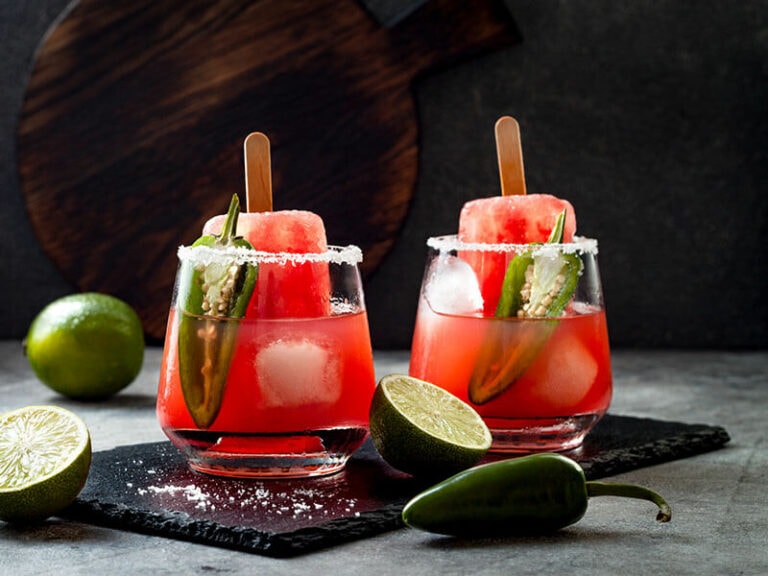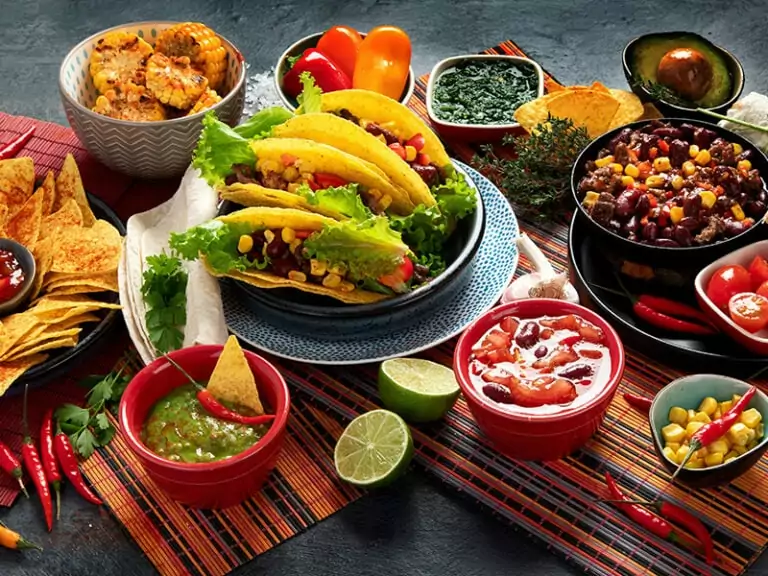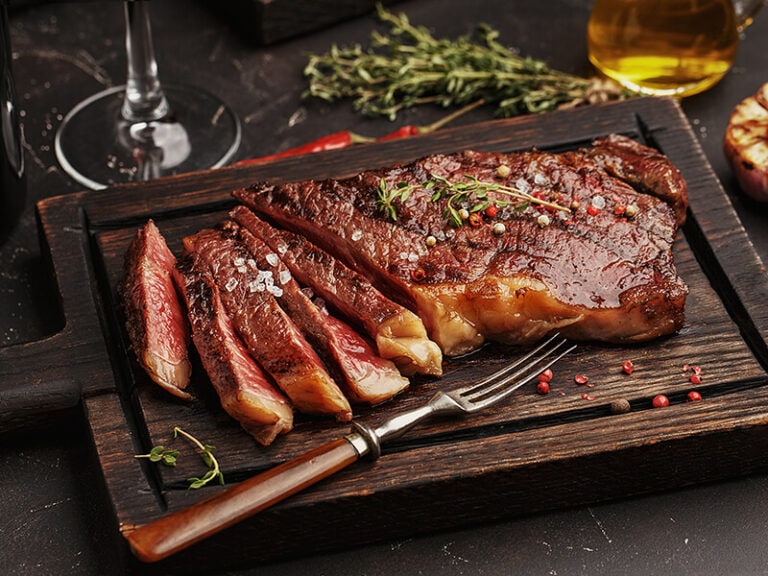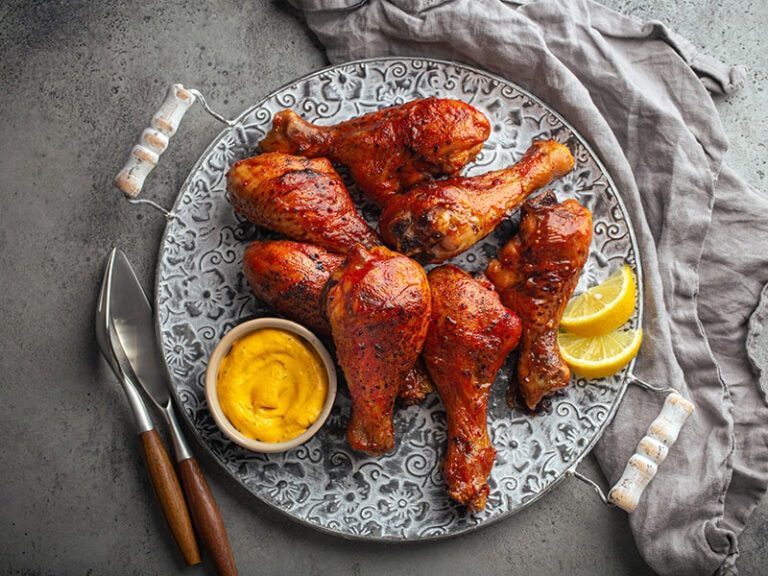If the question “what is lard?” crosses your mind, this article is just what you need. Speaking of this cooking fat, many people may panic because it was once villainized as an unhealthy-food item. However, its status has changed over the last few decades.
Though lard was once frowned upon, using this ingredient may be a growing trend in upcoming years. To my surprise, this old ingredient has returned to many home cooks and restaurant kitchens. After all, its excellent effects on cooking and baking are undeniable.
Are you interested in using lard in your cooking career? Below is a full breakdown of what it is, how to use it, and some substitutes to replace it when needed.
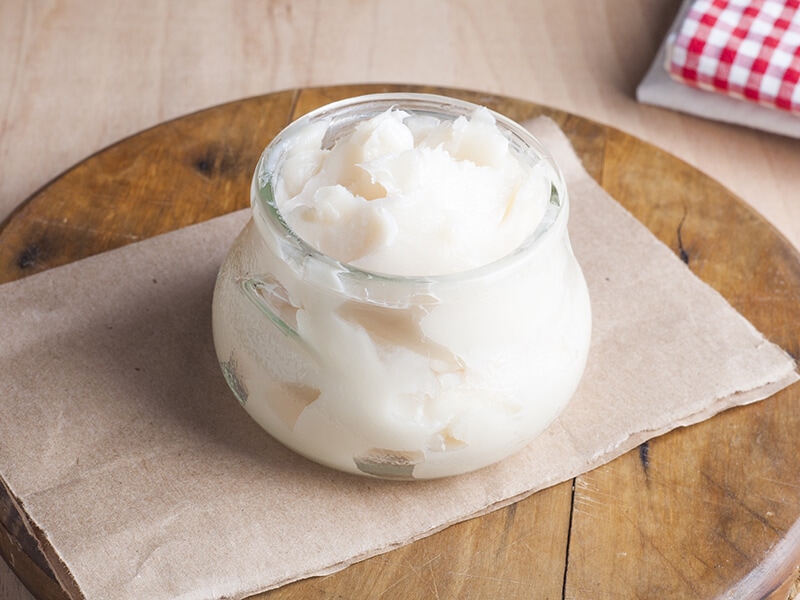
Lard 101 – Decoding The White Fat
If you ask the older generations about lard, you will be surprised by many exciting answers. Long gone are the days when lard got bad raps for its usage, but there is much to talk about this cooking fat.
A Brief Historically Glance At Lard
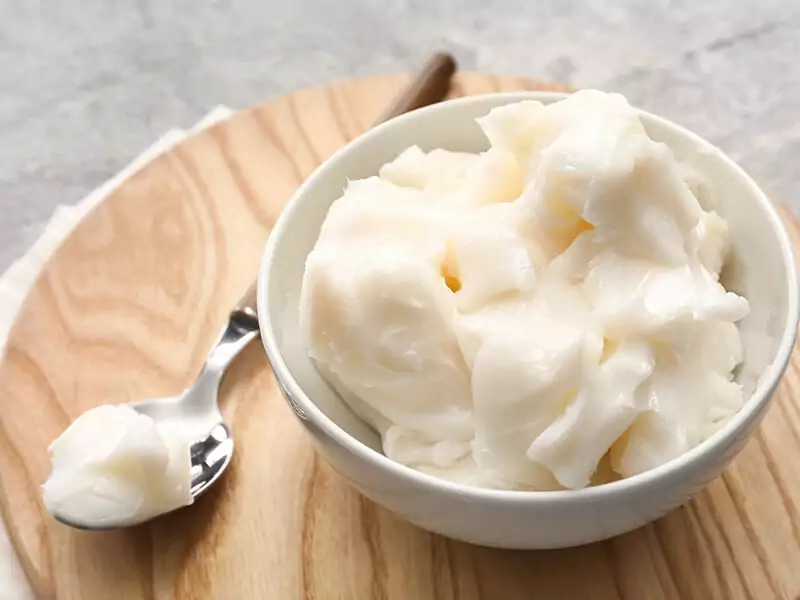
There was a time when lard was on the shelves of almost every American household. However, things started to change due to the growing popularity of vegetable oils in the early 20th century (1). Soon after, the pig-rendered fat was no longer a darling in the market.
Then came the last straw in the 1950s when restaurants turned their back on lard and switched to vegetable oils. Historians claim that this boycott originated from the warming of healthcare professionals. They accused lard of being the reason behind coronary heart disease.
Not until the last 20 years did scientists begin to have a softer view of saturated fats like butter and lard (2). Gram for gram, lard contains 20% less saturated fat than butter and less trans fat than shortening.
Discover why lard fell out of favor decades ago through this short walkthrough of its controversial history.
So What Is Lard In Essence?
Simply put, lard is rendered fat from pork. Regarding appearance, lard is creamy white with butterlike consistency. It’s in the solid or semi-solid form at room temperature and will turn into clear liquid at anywhere around 86°F – 118°F, based on the type of pork fat used.
As for the smoke points, lard only starts to burn when the thermometer hits above 370°F, meaning this fat won’t oxidize and break down at high temperatures. In other words, it’s a safe choice for high-heat cooking, including frying, searing, sauteing, and baking.
Once credited as the evil of animal fat, lard doesn’t gain a considerable favor as vegetable oils in western cuisine. But this fat is still a favorite of many cooks and bakers for specific uses. As an alternative to butter, lard is the secret weapon for the extra flakiness of baked goods.
It has become an integral part of the culinary culture in many countries. From Europe and China to Mexico, this pork fat is an everyday ingredient in these cuisines.
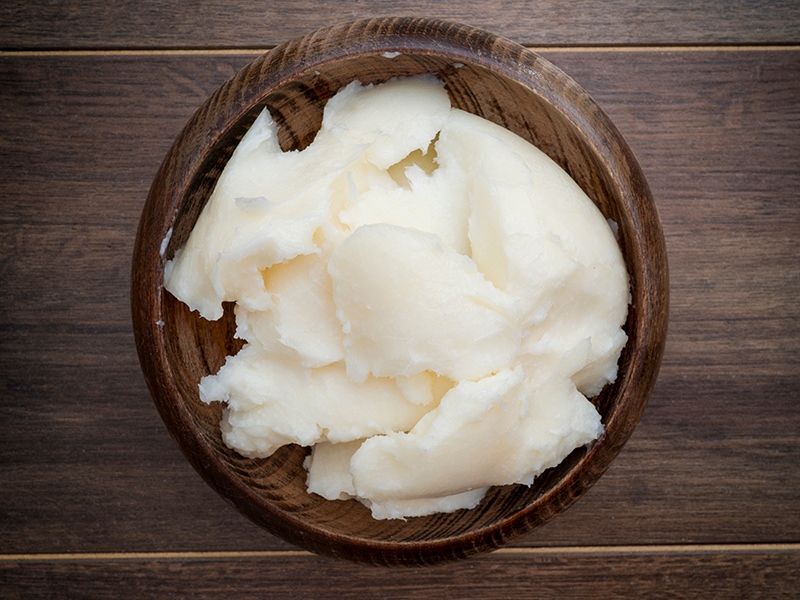
Curious About What Lard Is Made Of? Here’s The Explanation
First, let’s set the record straight: lard is different from tallow, which is derived from cattle or sheep. In general, this animal-based fat comes from the fattiest tissues of a pig. From a culinary standpoint, you may encounter three basic pig fat types used for lard.
Leaf Lard
As the highest-quality one, leaf lard comes from the pig’s loin and kidneys. This part is tender and leaves 100% non-porky flavor when it’s finished rendering. Accordingly, apart from savory cooking, leaf lard is also the ultimate choice for making a delicious yet flaky pie crust.
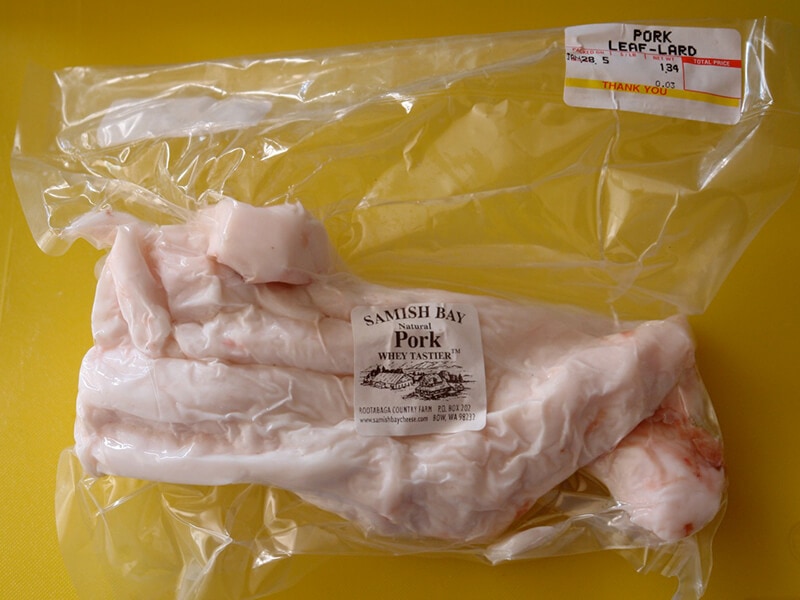
Leaf lard is the best pig’s fat portion to make lard, so its price is understandably higher than others.
Fatback
Next on the value is the fatback, located on the pig’s back. Rendered fatback is a great cooking oil due to its pork-like flavor and silky texture, especially in sausage making. Yet, due to the meaty flavor, lard made from this part is not ideal for sweet recipes such as pastry doughs.
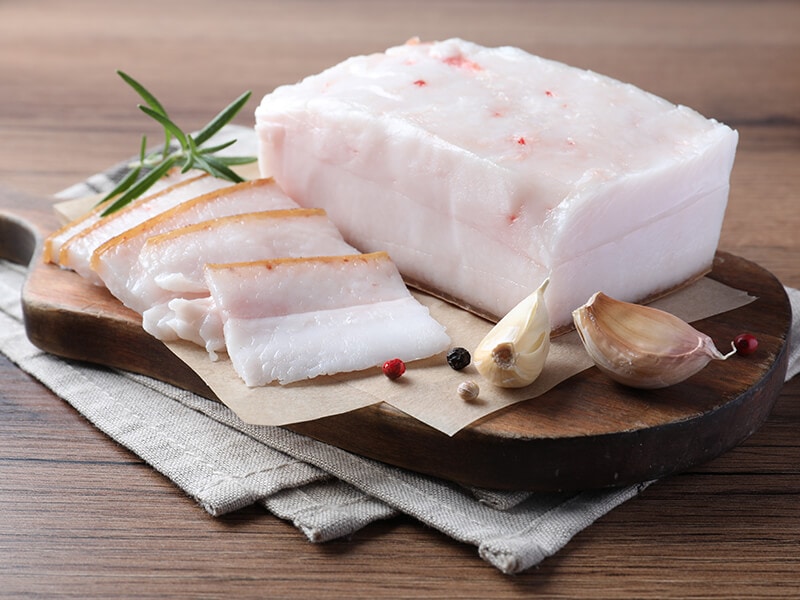
Caul Fat
This is the lowest-graded pig’s fat to make lard, the soft fat around the internal organs. Caul fat has a robust pork flavor profile, so it only performs best for savory dishes. Due to its net-like texture, it doesn’t act as an ingredient but rather a wrapper for meat cuts or pate.
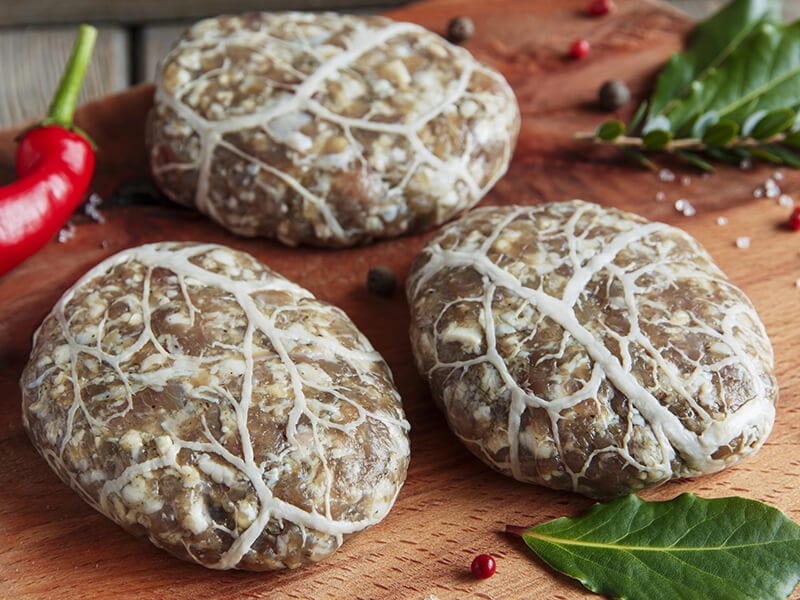
Let’s Dig In The Process Of Making Lard
Rendering lard is about melting animal fats by heat. There is wet rendering, which is boiling or steaming the fat in water. On the other hand, the dry method is when manufacturers process the fat in a considerable oven or pan without any liquid.
During this rendering process, the tissue or meat is simmered until the fats melt and separate from the solid. To get to the best purity, makers will filter this separated fat to remove sediments. After that, it will be bleached and added with hydrogen and preservatives (optional).
Once cool, lard will start solidifying, producing a solid and opaque substance. Rendering is simple and requires a few simple utensils, so you’re welcome to make it at home.
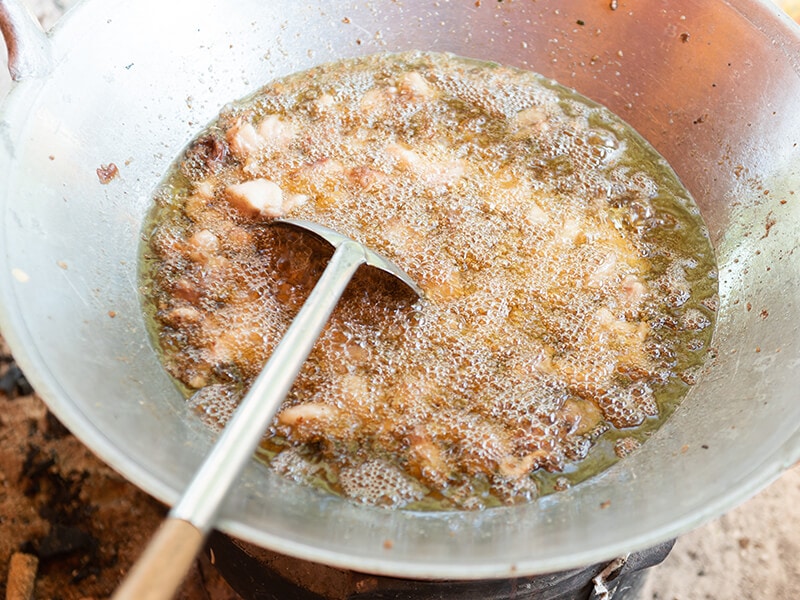
The Taste Of Lard
Taste-wise, its flavor palette can run from mild porky taste to flavorless. There are many factors deciding the lard’s overall taste, including where on the pig’s body the fat comes from or how the fat is rendered.
How the manufacturers prepare the fat greatly determines its taste. Different brands will hit the market with different variations.
In addition, the inclusion of hydrogens is also a big deal. Freshly-rendered lard is creamier, more spreadable, and brings a better melting effect. On the contrary, the hydrogenated one has more solid-like properties, so its firmness may be the first thing that hits your palate.
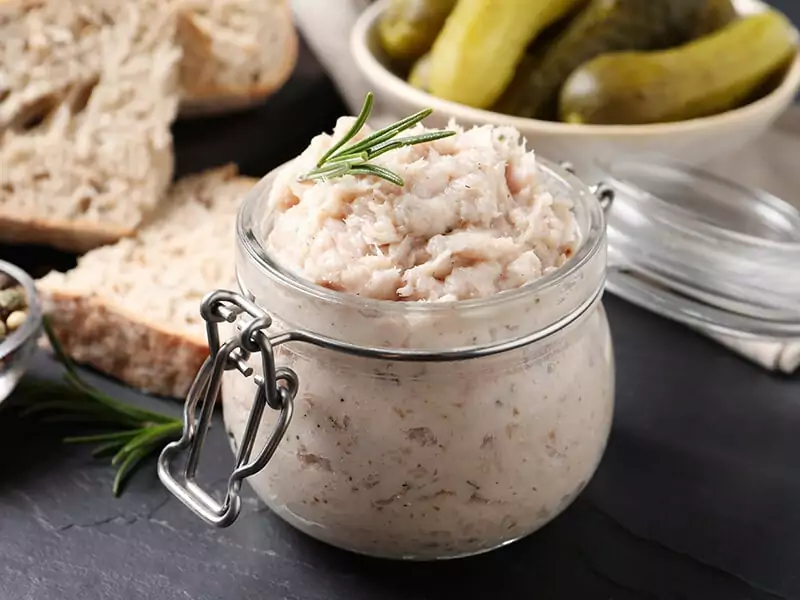
How To Use Lard In Your Daily Cooking
Like other cooking fat, lard can go to great lengths in recipes, giving sweet or savory cooking. Used in the culinary world for hundreds of years, it’s a familiar fat in deep-frying, grilling, and sauteing. Besides, people use lard in baking instead of butter and other oils.
The chemical makeup of lard is ideal for creating a crispy outer for fried seafood or fish. As for meat dishes, it adds more depth to the flavors of pates, sausages, or fillings. You need to use a full cup for deep-frying food, but a small amount of lard is enough for other cooking methods.
Meanwhile, lard always gets thumb-ups from pastry chefs in solid forms. This fat works similarly to shortenings and butter in baking recipes, and the perfect flaky results will be your reward. And if you’re bold enough, spreading it onto toast instead of butter will be interesting.
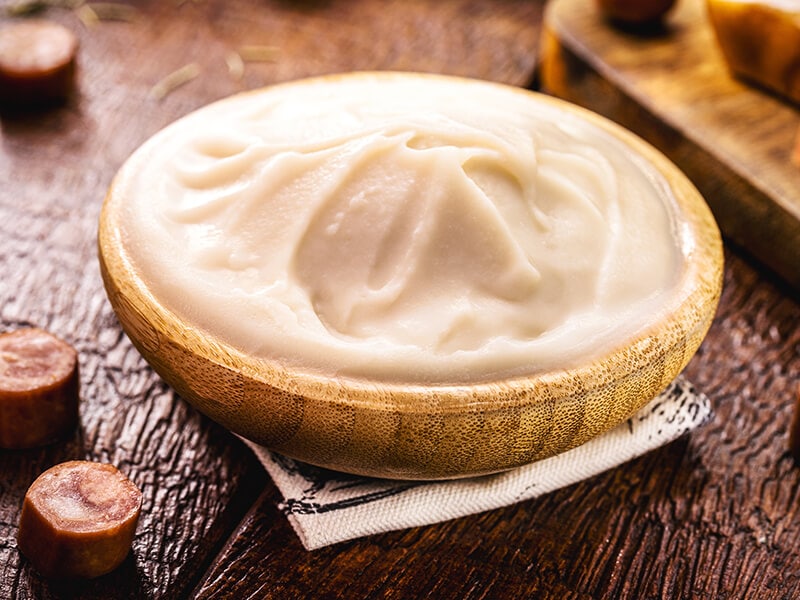
A Guide To Identify Different Types Of Lard
You already know that pig fat is lard’s origin, but that doesn’t mean all lard is the same. The price will vary based on the quality and purity of this cooking fat. Below are the four main varieties of lard.
Unrendered Lard
As its name implies, unrendered lard is a raw poultry fat trimming. It hasn’t undergone any melting or straining, so this fat still keeps the pronounced porky taste.
Due to its porky taste, unrendered lard is not the first choice for baking and needs to be rendered before use. However, don’t take this lard for granted because it is still valuable for certain dishes, such as barding meat.
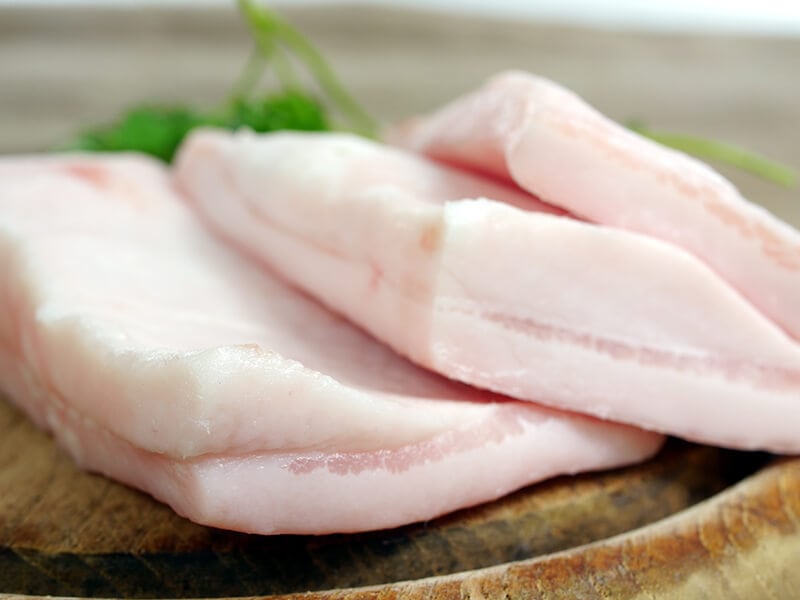
Rendered Lard
Unlike the unrendered variety, rendered lard does not carry such a robust pork taste since it has been processed. The neutral taste and creamy texture make this type versatile, given sweet or savory recipes.
Regarding the making process, this fat involves simple steps like melting, filtering, and chilling. Rendered lard is the easiest to make replicas at home, so feel free to give it a shot if you want to save money. Otherwise, find it at any local butcher or farmers’ market.
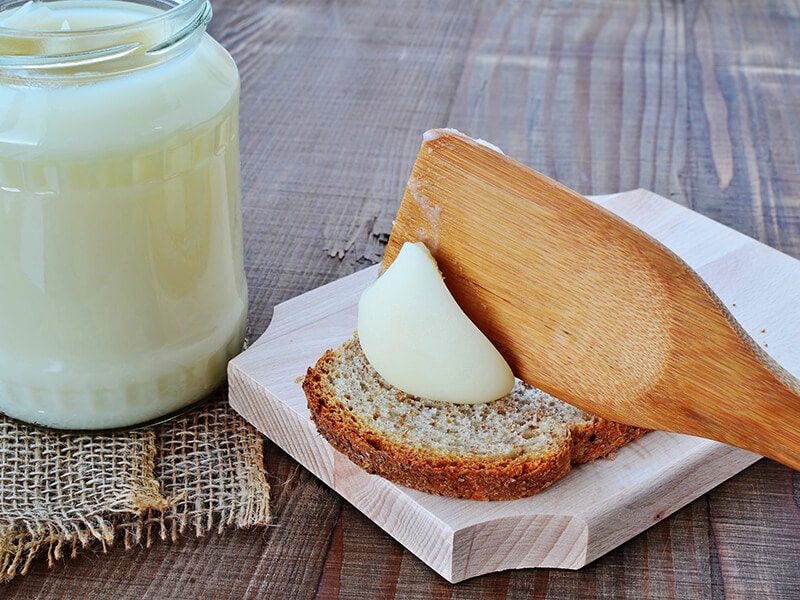
Processed Lard
Processed lard is also known as shelf-stable or hydrogenated lard. It is the most popular due to its purity and non-porky flavor. Processed lard needs more than rendering: it goes further with clarification to become shelf-stable.
The clarifying process consists of hydrogenation and bleaching. The first one will reduce the pork flavor, while the latter will add hydrogens to preserve the lard freshness and turn it into a solid at room temperature. Due to these added steps, it has a firmer mouthfeel than others.
Here is the tip: you’ll likely find hydrogenated lard if your fat is on unrefrigerated shelves. It is more resistant to rancidity than the freshly rendered variety. But on the downside, it has fewer nutrients and much more trans-fats, so make a wise move.
Leaf Lard
Named the uncrowned king of lard, this variety is softer and creamier than its counterparts. Along with the odorless, porky-free flavor, leaf lard is undoubtedly the highest grade.
Despite the higher price, leaf lard is still the number 1 choice for bakers and chefs. Due to the creamy texture, it’s easy to spread even at room temperature. Furthermore, this fat also has a high smoking point.
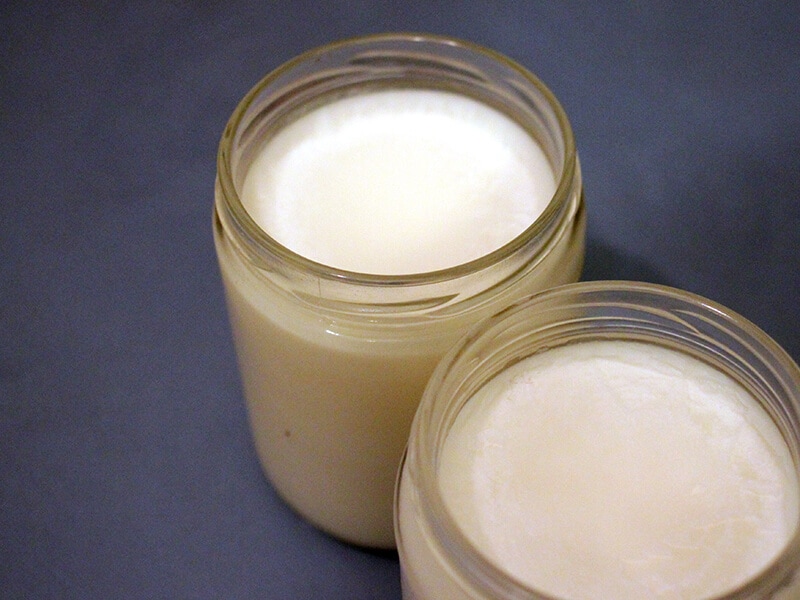
Leaf lard comes from the highest-quality fat portion of pigs, so it’s no wonder it is the highest-graded lard.
Best Lard Substitutes That Could Be Your Dinner Saviors
What to do if you run out of lard? Think of these lard alternatives when you’re in a pinch. However, these substitutes will shine in different recipes, so read carefully to have the best choice for your dishes.
Shortening
Shortening is probably the best alternative for lard since they share a lot in common. Made from 100% fat, shortening works in the same ways as lard. Needless to say, the 1:1 ratio works best for them.
Shortening is an all-rounder substitute, without exaggerations, because it can be present in any lard-needed recipe. With high smoke points, this ingredient does great in frying. At the same time, it also boosts flavors for other elements in baking and sauteing recipes.
If the definition of shortening is somewhat unclear, this simple explanation will give you a better overview.
Butter
This one is the easiest-to-find replacement for lard. However, a bit different from your pork grease, butter only carries 80% of the fat. Therefore, you must add extra butter to compensate for that shortage: use 1 ¼ cup of butter to replace 1 cup of lard.
Though there are minor modifications about quantity, you won’t feel differences in the overall flavor and texture. Like shortenings, butter is excellent for replacing lard in baking or sauteing recipes. However, frying in butter is not advisable since it has low smoke points.
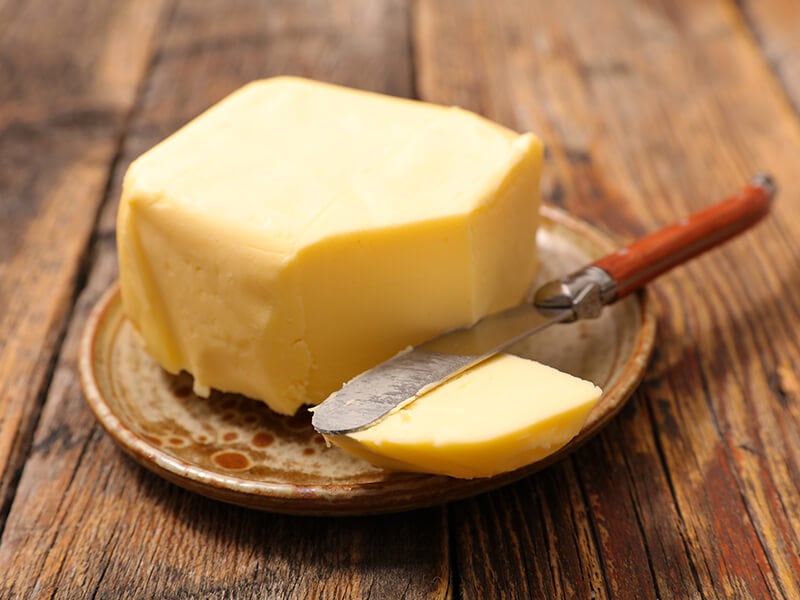
Coconut
You’re welcome to substitute an equal amount of coconut for lard for many culinary purposes, including sauteing, frying, and even grilling or baking (coconut oil). This, along with their nutrient-dense profiles, are why they are top-tier alternatives.
However, the downside is that these oils have intense flavors and aromas, so they may slightly change the taste and texture of certain dishes.
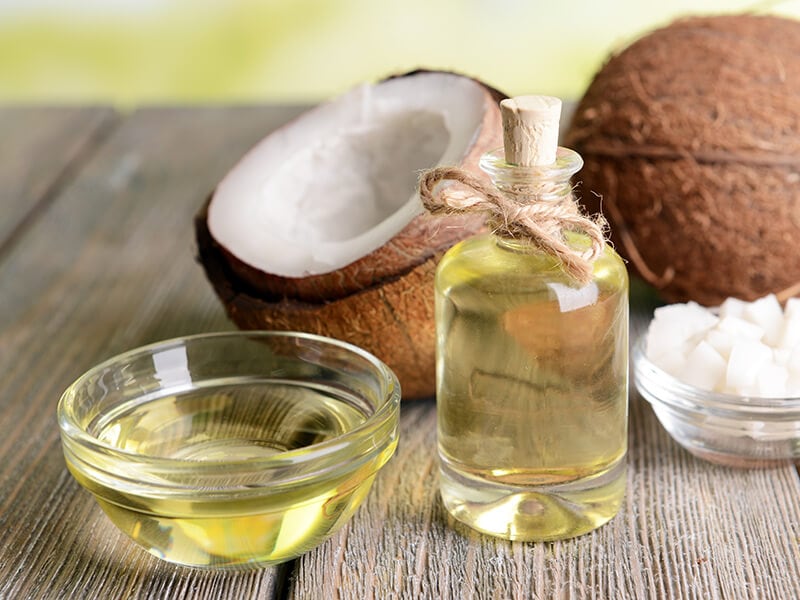
Vegetable Oil
With high smoking points and mild flavors, it is a favorite for numerous cooks. Since vegetable oil is flexible enough to be in many cooking recipes, lard and this ingredient can be used for the same purposes. For every cup of lard, opt for ⅞ cup of vegetable oil.
However, applying oils in baking cakes, cookies, or biscuits will make them denser and less tender. Therefore, I’d say no to this replacement in baking.
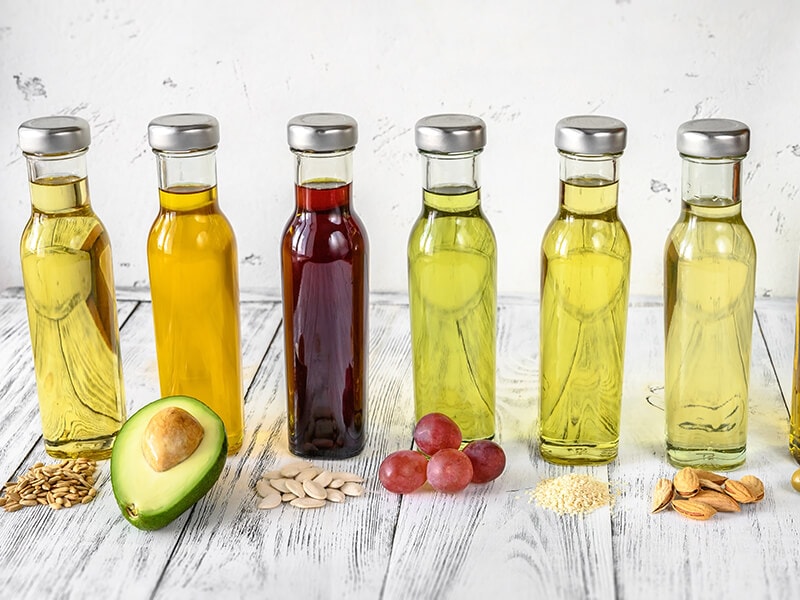
Lard Vs. Other Cooking Fats – Point Out The Differences
Lard, along with butter or shortenings, is in the same category as cooking fats, an extended term. Therefore, the comparison between those items is inevitable. But is lard inferior to other siblings? Let’s find out!
Lard Vs. Butter
As I already stated, this one is the second highest-fat source after lard and shortenings. Traditional butter results from churning the cream until it reaches a solid stage. In general, lard and butter are both baker’s choices of fats, but there are reasons for lard to become a favorite.
The differences in melting points are why most bakers opt for lard. With higher melting points, lard only melts when the pastry goes into the oven and, as a result, releases more steam during cooking, leading to a lighter and flakier result.
Moreover, due to their large size, the fat crystals in lard leave more space when they melt. As a result, baked goods with lard have more layers than those with butter. Try to combine these two fats in biscuits and pie crust, and you’ll be surprised to see how delicious they turn out.
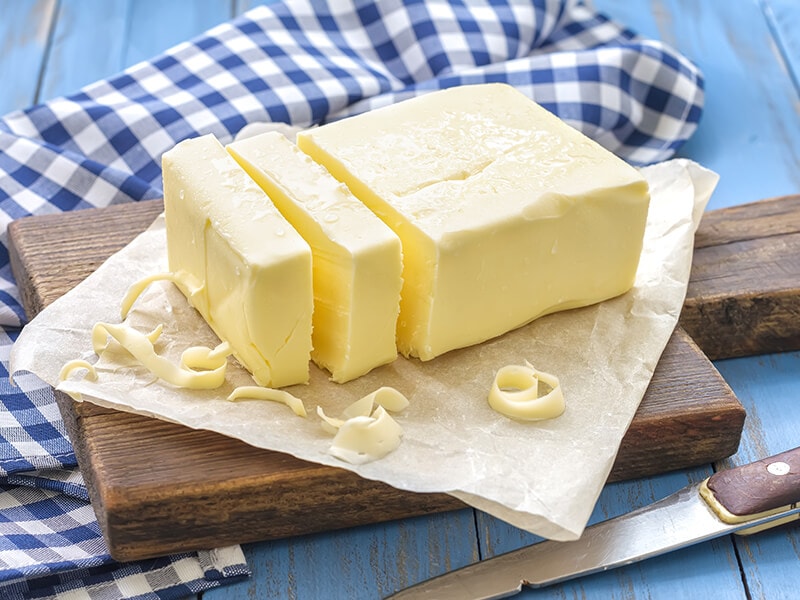
Lard Vs. Shortening Vs. Crisco
With the same behaviors in cooking and baking, lard and shortening perform spectacularly and can be interchangeable in specific cooking tasks. Yet, they were once nemesis to each other as the invention of vegetable shortening was a threat to lard in the 1910s.
You can tell the most obvious difference between these two is their origins. While lard comes from animal fats like pigs, shortening is derived from vegetable oils, such as soybean or cottonseed. Another thing is that shortening doesn’t give the same flavor or richness as lard.
On a related note, Criso often comes up in comparison with lard. At its simplest, this is also an American vegetable shortening brand made from palm oil and soybean oil. Like most vegetable oils, Crisco is an excellent substitute for lard in many recipes.
Lard vs. vegetable oils – which do you think it’s a winner in the nutritional field?
Why You Should Choose Lard Over Other Cooking Fats
After years of false accusations, lard is no longer a bad fat in the eyes of the public. In practice, lard is healthier than you thought. It has less saturated fats than many types of fat and can actually be good for your cardiovascular health if used in moderation.
Moreover, these fatty drippings contain zero trans fats, a lousy fat that can lead to weight gain, diabetes, and other health problems. Besides, since pork fat doesn’t break down at high heat, it poses fewer cancer risks than other oils that smoke at high temperatures.
Heart aside, your brain and kidneys also benefit from a lard diet. This fat contains about 50% monounsaturated fats and 15% polyunsaturated fatty acids. Those substances have a lot of benefits, from reducing risks of heart diseases to aiding the function of brain cells (3)(4) .
Last but not least, lard is sustainable. Using lard is equal to reducing animal waste and being more environmentally conscious. Nevertheless, it’s a cooking fat; you’d better use lard in moderation.
Famous Lard Brands That Are Worth Your Dimes
If buying lard at stores is your preference, it would be wise to dive deeper into the lard market and find the best ones. Check out the well-known lard brands below and pick what suits you best. Don’t worry; they all have good reviews from previous buyers.
1. Tenderflake
The list of the best lard brands won’t be complete without Tenderflake, a friend from Canada. They are the first Canadian lard brand that is non-hydrogenated. Plus, Tenderflake takes prizes for their pure pork fat source, which is lean enough to meet the high standard of Canada.
2. Armour Lard
Do you know that the sale of Armour has been on top in the US for over 140 years? If that’s not appealing enough, they also promise completely trans-fat-free products. Plus, the smooth and creamy texture of their lard is to die for.
3. Fatworks
What is unique about Fatworks is that they use 100% free-range pasture-raised animals. Rest assured that your lard source is safe from hormones, GMOs, and antibiotics. You can count on their commitment to bringing high-quality cooking fats using the highest-quality ingredients.
Check out this quick review to put more best lard brands to add to your bucket list!
Let’s Get Cooking Lard!
Why bother buying processed lard at stores when you can make a fresh, hydrogen-free batch at home? Give this DIY lard a shot; I promise you won’t be disappointed.
Ingredients And Equipment
As I already said, rendering lard at home is easy peasy with a few steps and no fancy gadgets. The most challenging and important part is choosing the right pork fat. If you don’t believe me, look at the list below:
- Cold lard
- Water
- Colander
- A slow cooker or a large pot
- Storage container
One thing you must remember is to freeze the lard beforehand. This way, it will be easier to chop it into smaller pieces.
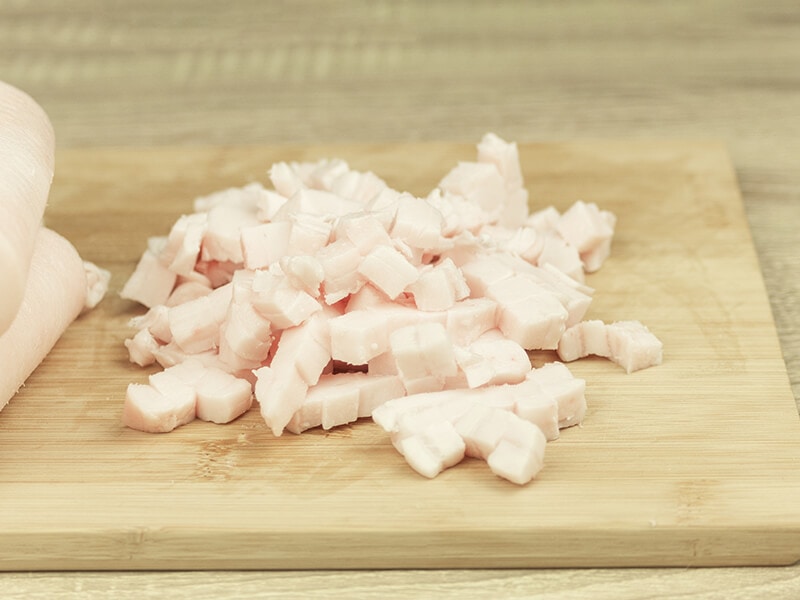
4 Steps To Make Your Dream Lard Come True
Rendering lard doesn’t require special skills, but patience is vital. The process will take hours, but the result is worth it. If you succeed, this cooking fat can last about six months to a year in your fridge.
Step 1: Chop, Chop, Chop!
After taking the frozen fat out of the freezer, cut it into small pieces. Next, add them with water into the bottom of a slow cooker or larger pot. Turn the slow cooker on to low setting or set an oven at 225°F. Alternatively, cook it on the stovetop over low heat.
Step 2: It’s Melting Time!
Melt the mixture for about 1 ½ to 2 hours or more until the cracklings (the crisp pork skin) sink to the bottom of the crock/pot. Remember to keep an eye on the fat to prevent burning.
Step 3: Remove The Cracklings
Ladle the melted fat through a cheesecloth three or four times to separate the liquid from the cracklings. Otherwise, use a sieve to strain it if that is more convenient for you. Repeat the action until there are no sediments left.
Step 4: Store It Right!
Pour the strained liquid into a jar or airtight glass container. Leaving it at room temperature or in the fridge is up to you. After a while, it will settle and become firm. Using it immediately instead of oil is acceptable if you’re in a hurry.
Rendering lard at home is never this easy. Check this simple tutorial out now!
Storing Lard – What You Need To Know
Lard is shelf-stable, meaning that it stays solid at room temperature, so technically, this pork grease can safely stay on the counter or in the kitchen pantry. However, in practice, room temperature is not stable enough for lard storage since it can get affected by external causes.
At its simplest explanation, the ideal temperature to preserve lard, whether it’s rendered or processed, is below 75°F. Otherwise, it will go spoiled.
As such, the refrigerator or freezer is still a safer place to store this fat. However, note that you must tightly seal lard in airtight containers so it won’t affect the surrounding items.
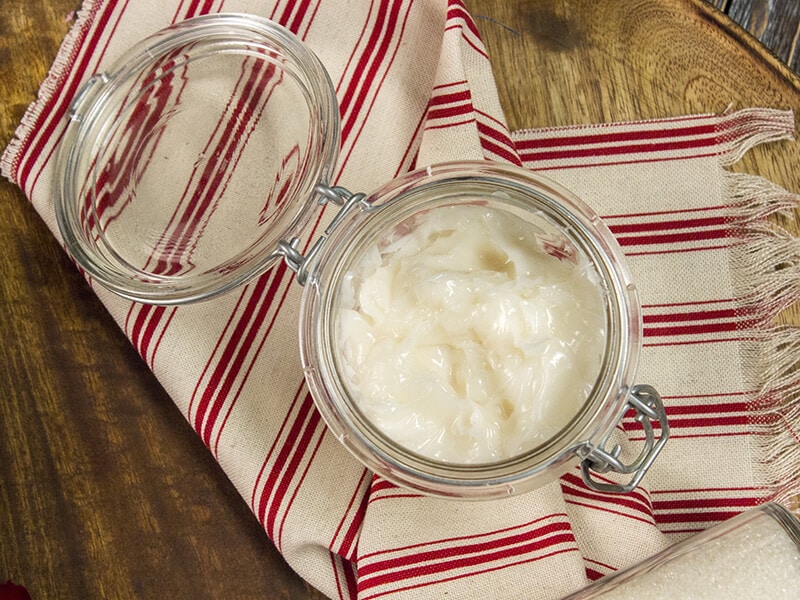
FAQs
Reading this far, you have gone a long way in this journey and know more than one or two things about lard. However, if you want to discover more about lard, the related questions below might do the job.
No Need To Be Afraid Of Lard Anymore!
Back in the day, the term lard could bring horror to home cooks with a fear of heart disease. But things have changed now. By any estimation, it is healthier than most cooking oils. Moderate lard consumption is certain to do more good than harm.
Are you surprised by these new sides of lard? Whatever your answer is, comment and let me know what you think. Even better, you’re welcome to lend a few tips for rendering the lard to other readers and me. Please remember to give this article a thumbs-up and share. Ciao!
References
- Lard bucket (2021) UTSA Institute of Texan Cultures Sharecropper Cabin.
- Is butter really back? (2016) Harvard Public Health Magazine.
- Bazinet, R.P. and Layé, S. (2014) Polyunsaturated fatty acids and their metabolites in brain function and disease, Nature News. Nature Publishing Group.
- Robertson, R. (2017) What are the benefits of monounsaturated fats?, Healthline. Healthline Media.

